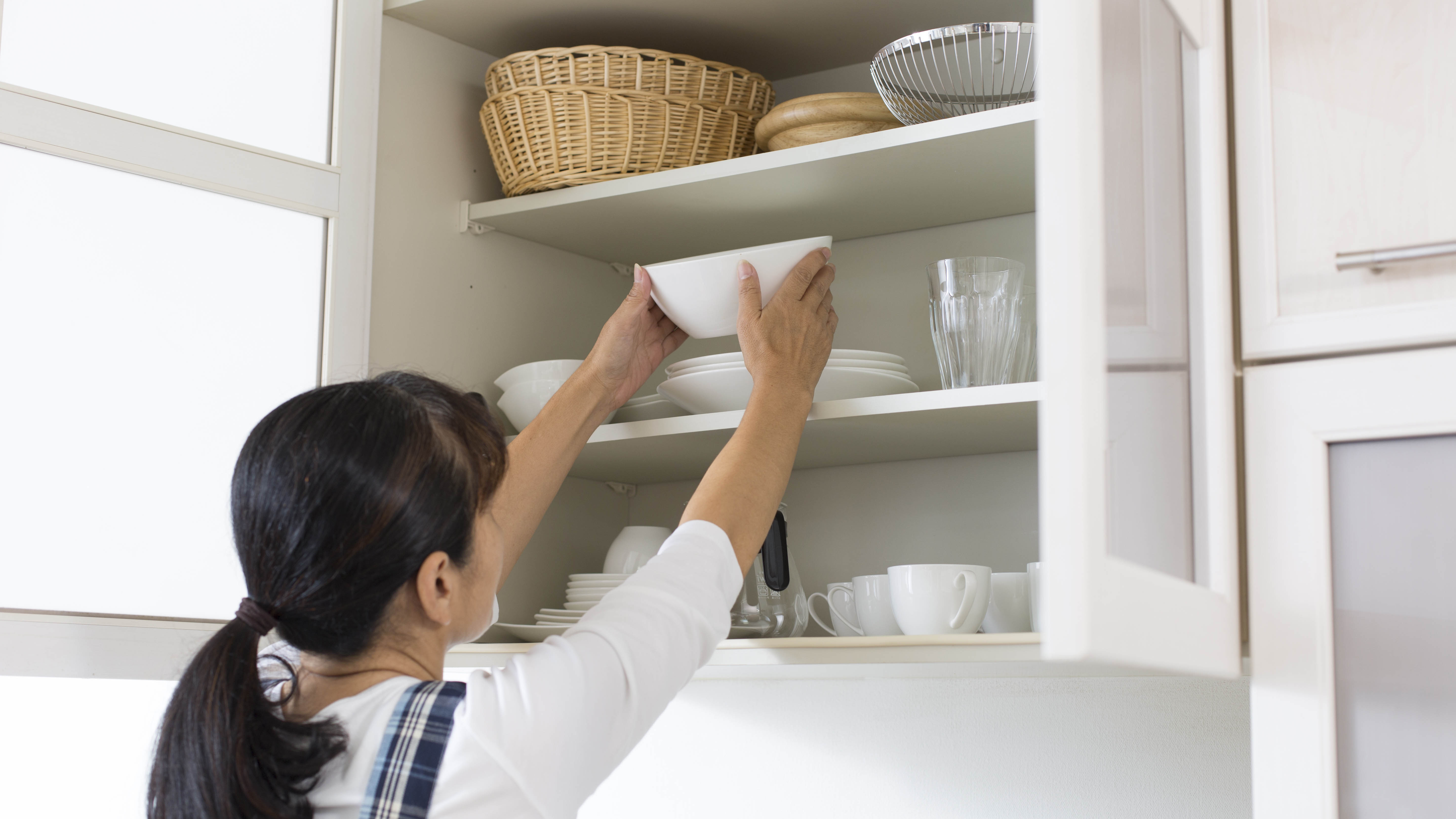
We spend most of our time in the kitchen, and so it’s no surprise that our cabinets are put to good use. From tableware and pots and pans to condiments and small appliances, our cabinets often become jam-packed to capacity over time.
Trouble is, if there’s more stuff going in and less going out, things can quickly become a cluttered mess, making it a chore to find anything easily. What’s more, clutter takes up precious cabinet space, which looks unorganized and untidy. This is especially the case if you have a compact kitchen or a lack of storage space.
Before you should even consider putting space-saving hacks to organize kitchen cabinets in place, you’ll need to know how to declutter your kitchen cabinets. Knowing how to declutter your home and kitchen properly can seem a little overwhelming, especially when you have more stuff than space! However, all it takes are a few simple steps that will make the task more manageable and less stressful.
So if you don’t know where to start, follow these tips on how to declutter your kitchen cabinets in five steps.
1. Get rid of all non-essential items
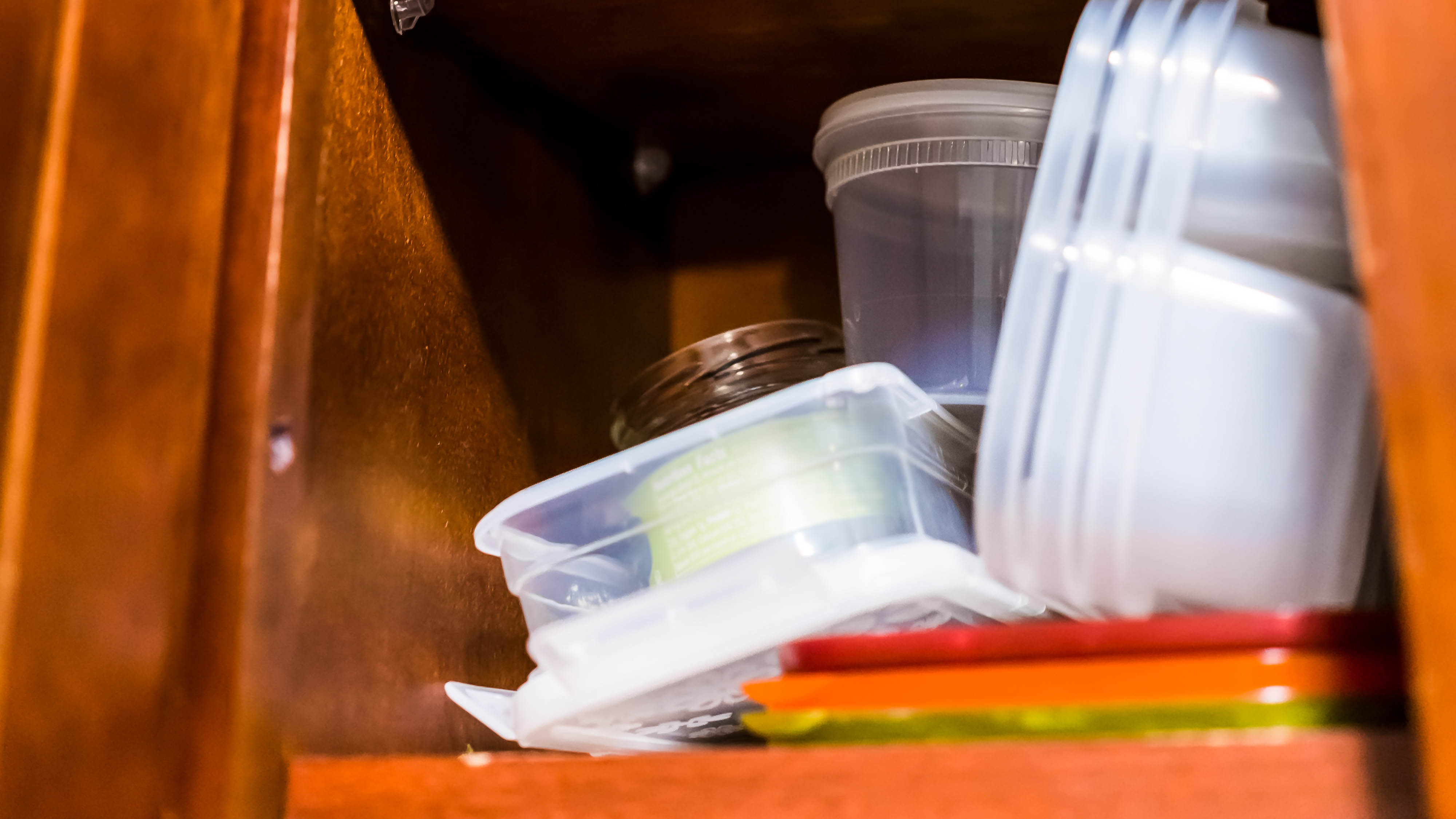
Whether it’s ad hoc plastic lids from old takeaway containers or those glass ramekins you’ve always promised to reuse (but never do!), get rid of all the items you don’t need. These only take up valuable space and build up clutter. Plus, as much as the intention was there to upcycle, chances are that you won’t!
The best thing is to tackle one cabinet at a time to avoid being overwhelmed. Then take the contents out, placing them on a countertop or table where everything is visible.
Throw out any non-essential items that you haven’t used or are likely to use. This includes any chipped tableware or glasses that might be forgotten about, or even the broken or dated small appliances that have been shoved at the back of your cabinets — never to be seen again.
“Kitchen cabinets can quickly gather mountains of stuff, whether it’s decade-old mugs or an amalgamation of seasonings and food well past its sell-by date,” says Camilla Lesser, Development manager at Essential Living. “Decluttering at regular intervals is important to keeping cabinets clean and organized. You may not have seen the back of your cabinets for some time and have lots to work through, making it best to tackle a clear-out in stages."
Lesser adds: "If you find multiples of items or items you no longer use that are in good condition, put them aside to be donated. Anything cracked, dented or chipped to an unusable degree should be thrown away.” You’ll be surprised to see how much unused clutter has taken up space in your kitchen cabinets!
2. Deep clean your cabinets
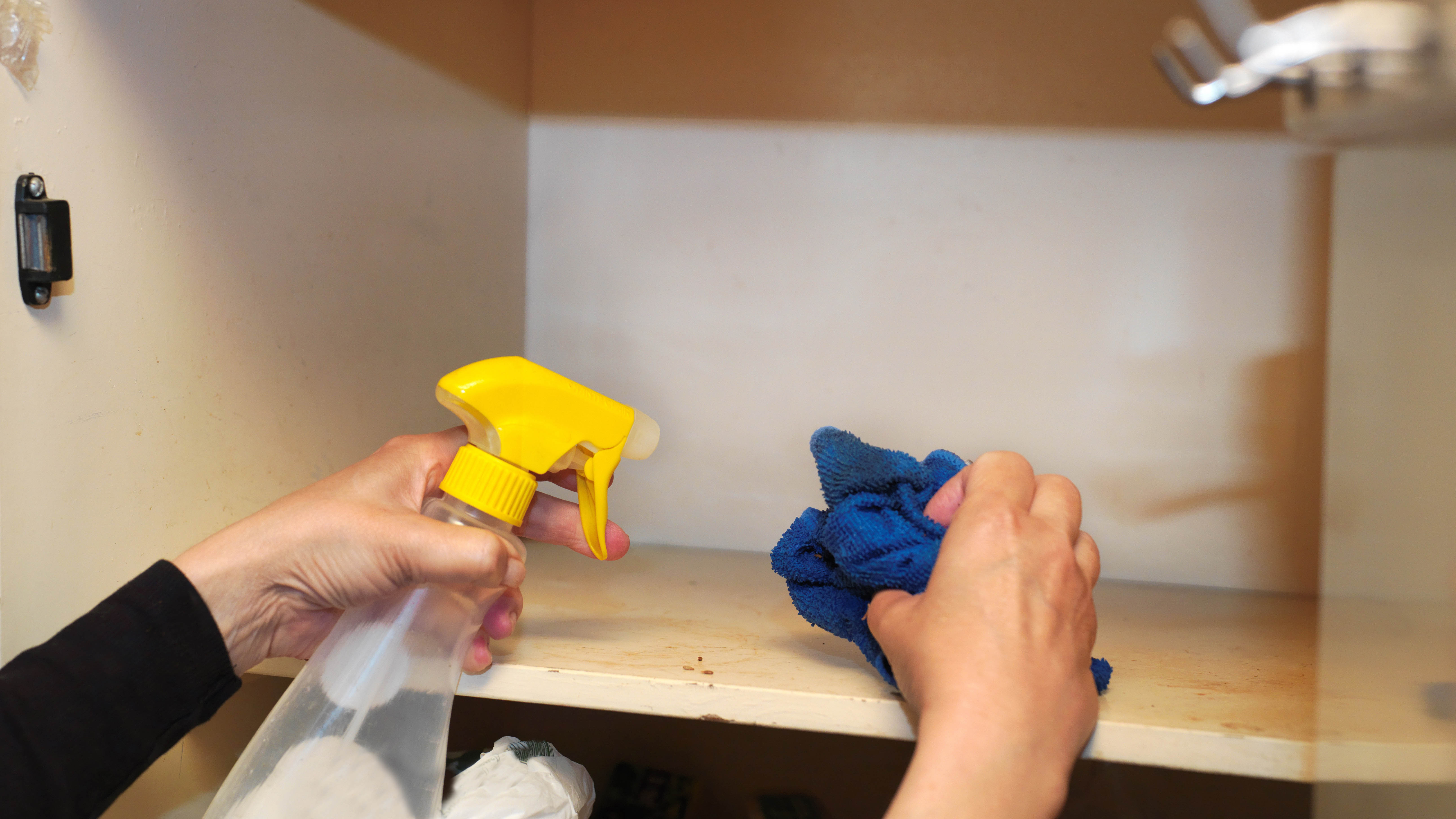
While you’re decluttering, this is a good time to give your cabinets a refresh to get rid of any crumbs, dirt or sticky spillages. You could opt to line them with shelf liners like these Shelf Cabinet Liner Non-Adhesive ($17, Amazon), to protect the surfaces and for easy maintenance.
This is especially helpful for keeping your pantry or cabinets where you store food supplies mess-free. In addition, it’s important that you go through expiry dates on perishables, bottles or jars and discard out-of-date items. Also discard those almost empty bottles that are just taking up space in the cabinets.
“Empty all items out onto a kitchen worktop or table, vacuum the inside of the cabinets and wipe down with disinfectant,” agrees Lesser, “Ensure all the food is within date and prioritize eating what’s there before doing another big food shop. Anything past its sell-by date or looking past its best will need throwing out.”
3. Divide your cabinets into ‘zones’
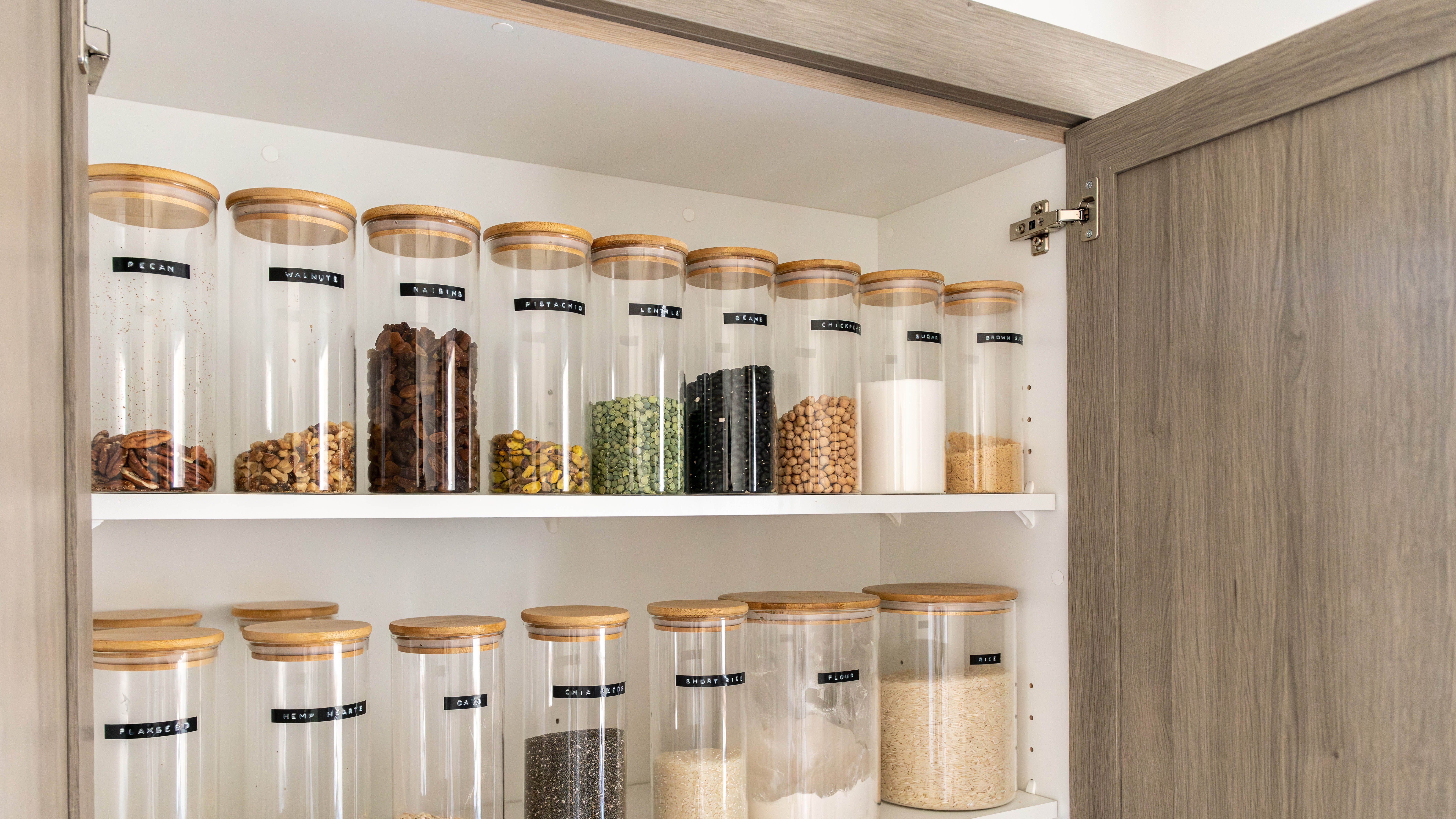
If you spend most of your time rummaging through endless clutter to find what you’re after, it’s best to categorize or group similar things together. Experts advise dividing your cabinet space into zones to keep everything organized and in their place.
For instance, allocate areas for things like cookware, baking trays/accessories or small appliances. Then, label each zone clearly to make it easier to find things at a glance.
Alternatively, you can group multiples of the same items like cooking oils, dried foods, and condiments in your pantry. This will also help you locate things quicker, and know when you need to restock.
4. Only display appliances that you use daily
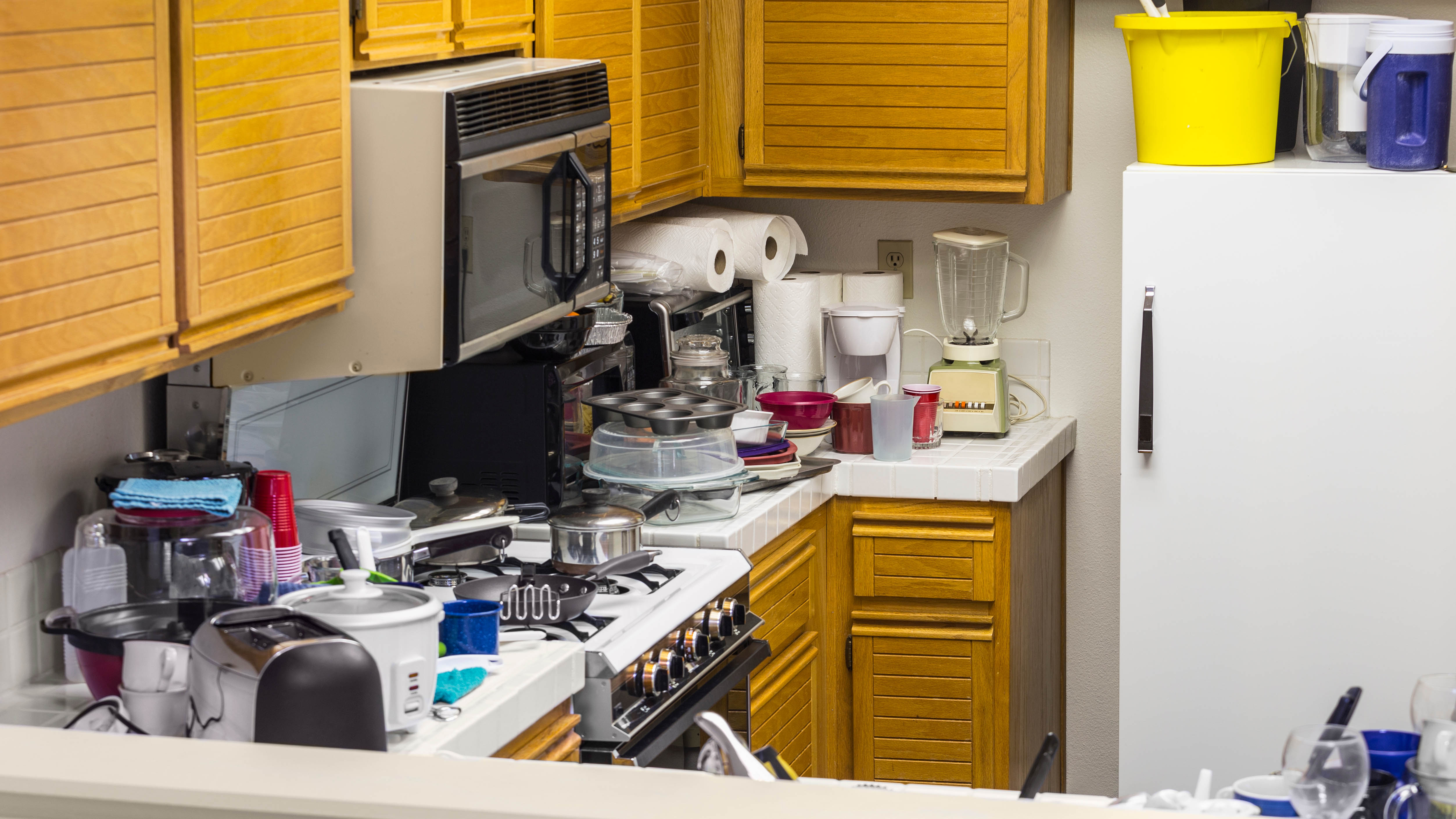
Whether you enjoy cooking or like to buy the latest kitchen gadgets to make meal prep easier, it’s very easy to let them all build-up in your kitchen cabinets or countertops. Instead of cluttering up your space with every appliance, only take out the appliances that you use on a regular basis.
In addition, when storing away in your kitchen cabinets, place the appliances that you rarely use toward the back, and bring forward those that you are likely to use often. This also saves you the hassle of emptying everything out again just to find your best blender or best food processor.
5. Organize with clever storage solutions
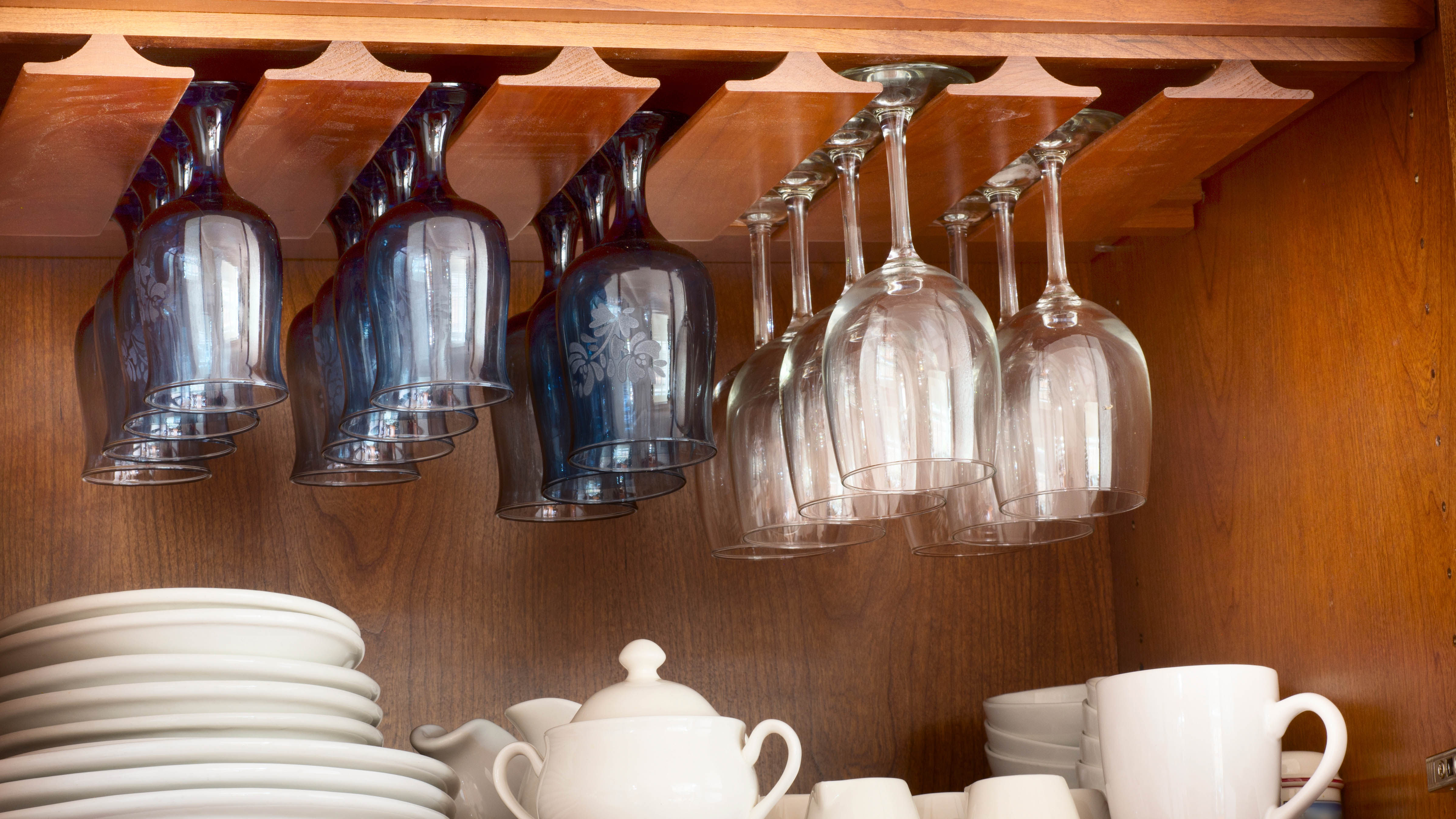
Once everything is ditched, donated and cleaned, now you can begin setting up storage solutions to help get organized. To maximize vertical space inside your kitchen cabinets, shelf risers are a great tool. This is because these sturdy racks allow you to stack items on top of each other, without the risk of cans or items collapsing.
In addition, rather than having jars and packaging cluttering up your shelves, these risers like this WOSOVO Set of 2 Kitchen Cabinet Organizer and Storage Shelves ($29, Amazon), make everything visible and easier to keep tidy.
Alternatively, you could install under cabinet hooks designed to hang utensils or mugs. Or, you can showcase your wine glasses using this Wallniture Brix Wine Glass Holder ($19, Amazon), or mount a paper towel holder that's always handy. Other handy cabinet organizers include door mounted racks or even the underside of cabinets.







